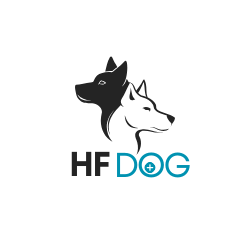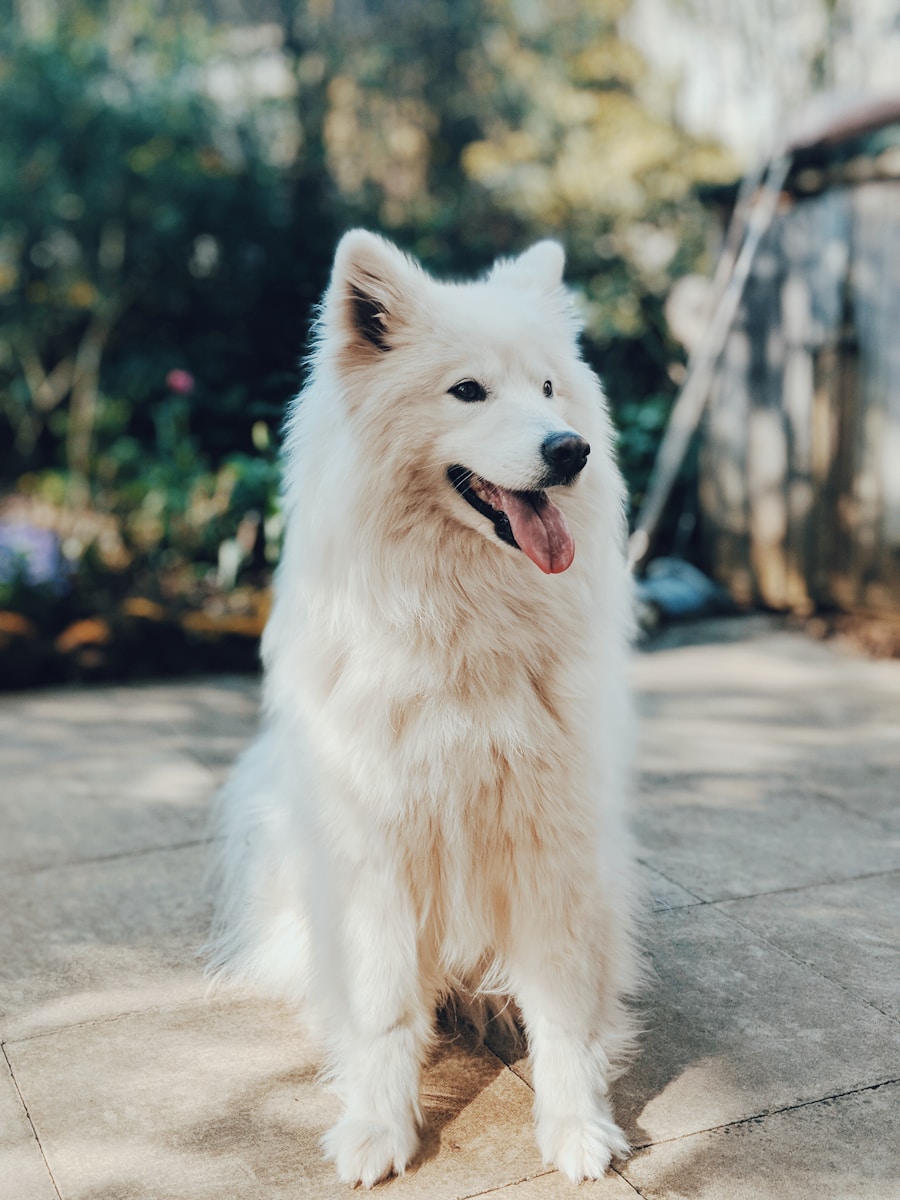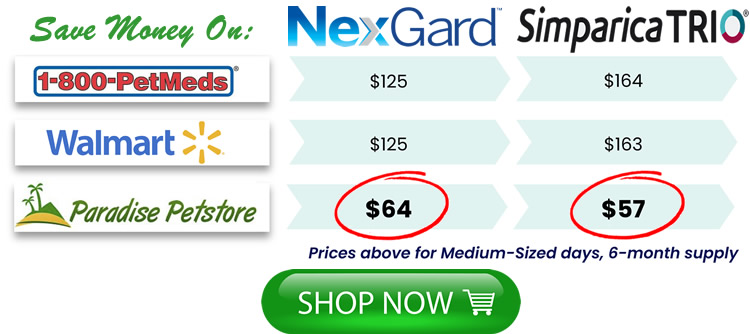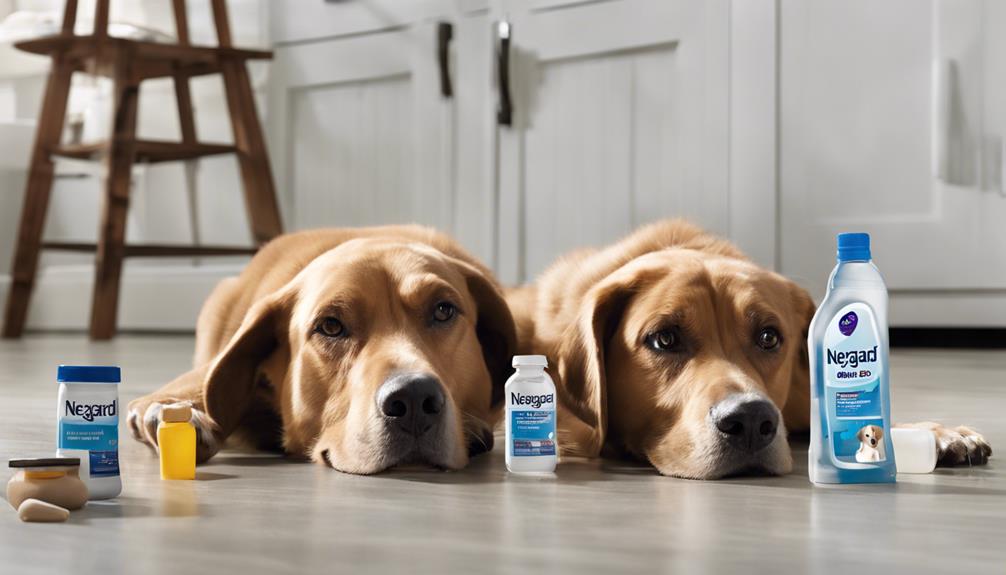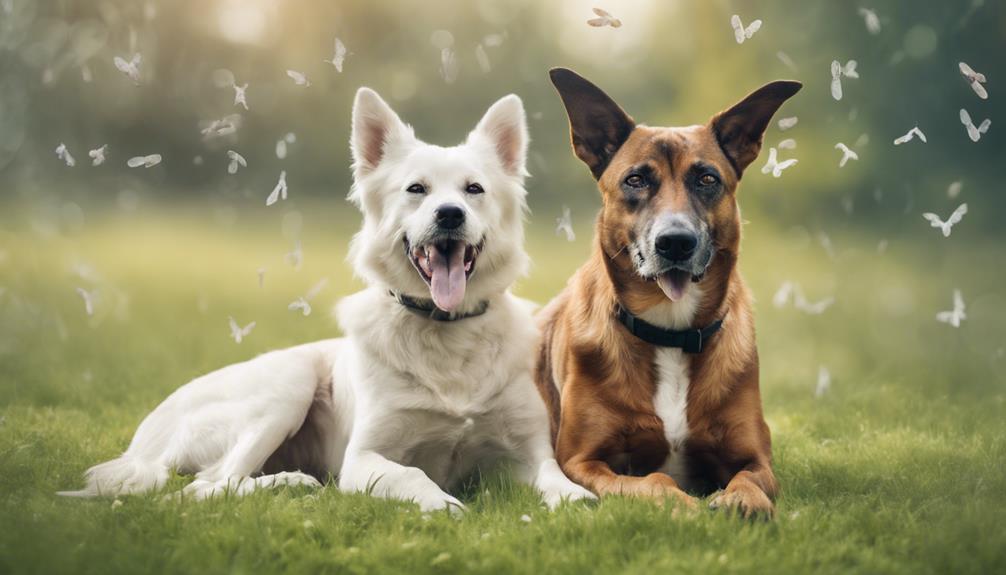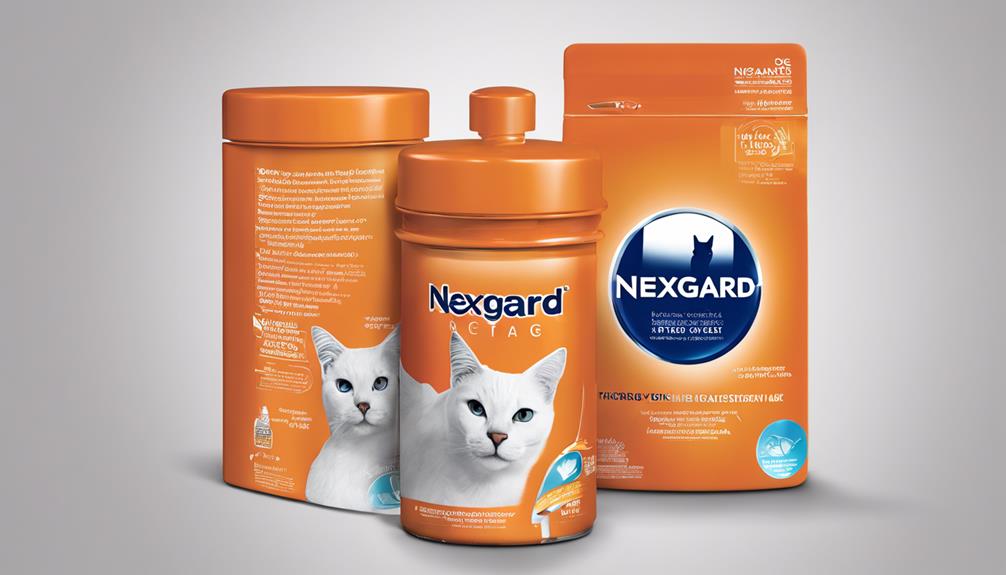Easy Ways to Relive Your Dog’s Anxiety and Stress
To relieve your dog's anxiety and stress, start by understanding their triggers. Watch for signs like pacing or trembling. Provide a safe space, make it cozy, and free from loud noises. Play calming music softly to promote relaxation. Regular exercise helps both physically and mentally. Stick to a consistent routine for a happier pup. Aromatherapy with oils like lavender can create a calming atmosphere. Use positive reinforcement training to strengthen your bond. Seek professional help for severe cases. Create a relaxing environment with familiar items. These simple strategies can greatly benefit your furry friend's well-being.
Key Takeaways
- Identify stress triggers through observation and journaling.
- Create a safe space with comfort and quietness.
- Use calming music with soft melodies and natural sounds.
- Provide regular exercise for physical and mental well-being.
- Establish a consistent routine for a happier, relaxed dog.
Understanding Your Dog's Triggers
Identify the situations or stimuli that cause stress for your dog to understand their triggers better. Pay close attention to your dog's body language and behavior when certain events occur. Is it loud noises, unfamiliar visitors, or being left alone that seem to trigger anxiety? By pinpointing these triggers, you can start developing strategies to help your furry friend cope better.
Watch for signs like pacing, excessive barking, trembling, or hiding. These behaviors can offer valuable insights into what situations your dog finds stressful. Keep a journal to track these triggers and note any patterns that emerge. This information will be crucial in developing a plan to address your dog's anxiety effectively.
Providing a Safe Space
Consider creating a safe haven for your dog, a place where they can retreat when feeling overwhelmed or anxious. This safe space should be a quiet and comfortable area where your dog feels secure. You can designate a cozy corner in your home or a specific room where your dog can go to relax. Make sure this space is free from loud noises or distractions that could add to your dog's stress.
Provide soft bedding or blankets in this safe space for your dog to rest on. Adding some of your dog's favorite toys or blankets can also help them feel more at ease. It's essential to make this area inviting and calming for your furry friend.
Additionally, ensure that your dog has easy access to this safe space at all times. Keep the area open and accessible so that your dog can retreat there whenever they need to. By creating a safe haven for your dog, you can help them feel more secure and reduce their anxiety levels.
Utilizing Calming Music
Create a soothing environment for your dog by incorporating calming music into their daily routine. Just like music can relax and destress humans, it can have a similar effect on your furry friend. Choose soft, slow-tempo melodies or classical music to help calm your dog's nerves and reduce anxiety. The gentle tunes can create a sense of tranquility in your home, providing a peaceful ambiance for your pet.
When selecting calming music for your dog, consider sounds that mimic natural elements like flowing water, gentle breezes, or rustling leaves. These nature-inspired sounds can have a soothing effect on your dog, helping them feel more at ease and secure in their surroundings. Play the music at a low volume to prevent overwhelming your pet with loud noises.
Allow your dog to listen to calming music during times of stress, such as when you're away from home or during thunderstorms. This can help distract them from anxiety-inducing triggers and promote relaxation. By incorporating calming music into your dog's routine, you can create a serene atmosphere that promotes emotional well-being and reduces stress levels.
Regular Exercise and Playtime
Looking to boost your dog's physical and mental well-being? Regular exercise and playtime are essential for keeping your furry friend happy and healthy. Daily physical activity not only helps maintain your dog's weight and overall health but also plays a significant role in reducing anxiety and stress levels.
Engaging in activities like brisk walks, playing fetch, or letting your dog run around in a fenced yard can release pent-up energy and tension. Physical exercise stimulates the release of endorphins, the feel-good hormones, which can elevate your dog's mood and reduce feelings of anxiety.
In addition to the physical benefits, playtime also provides mental stimulation for your dog. Interactive games, puzzle toys, and training sessions challenge your dog's mind, preventing boredom and destructive behaviors that can stem from anxiety.
Make sure to tailor the exercise routine to your dog's age, breed, and fitness level. By incorporating regular exercise and playtime into your dog's schedule, you can help alleviate anxiety and promote a happier, healthier life for your beloved pet.
Implementing a Consistent Routine
Establishing a consistent routine for your dog is vital in creating a sense of stability and security. Dogs thrive on predictability, so try to feed them at the same times each day, take them for walks on a regular schedule, and maintain consistent playtimes. When your furry friend knows what to expect, it can help reduce their anxiety and stress levels.
Start by setting specific times for feeding your dog. This routine can help regulate their digestive system and provide a sense of security knowing when their next meal is coming. Additionally, consistent exercise times are crucial for both physical health and mental stimulation. Regular walks or play sessions can help burn off excess energy and keep your dog happy and balanced.
Moreover, ensure that bedtime and wake-up times are consistent. Dogs appreciate having a regular sleep schedule, just like humans. By implementing a structured routine in your dog's daily life, you can significantly reduce their anxiety and promote a happier, more relaxed pup.
Using Aromatherapy
Implementing aromatherapy can be a soothing and effective way to help alleviate your dog's anxiety. Aromatherapy uses essential oils derived from plants to create a calming environment for your furry friend. Lavender, chamomile, and frankincense are popular choices known for their relaxing properties. You can use a diffuser to spread the scent throughout your home or dilute the essential oils with water and spray it on your dog's bedding. Make sure to consult with your veterinarian before using any essential oils to ensure they're safe for your dog.
The scent of these essential oils can help reduce stress and anxiety in dogs, creating a peaceful atmosphere. When using aromatherapy, it's essential to observe your dog's reaction to the scents. Some dogs may be more sensitive to certain smells, so it's crucial to monitor how they respond. Additionally, always use high-quality essential oils and avoid direct contact with your dog's skin or ingestion. Aromatherapy can be a simple yet effective way to help your dog relax and unwind.
Positive Reinforcement Training
To effectively train your dog using positive reinforcement, focus on rewarding good behavior with treats or praise. Positive reinforcement training involves rewarding your dog immediately after they exhibit the desired behavior, reinforcing that behavior positively. When your dog follows a command or behaves well, promptly give them a treat or offer enthusiastic praise to strengthen the behavior you want to see more of.
Consistency is key in positive reinforcement training. Make sure to reward your dog every time they display the desired behavior to help them understand what you expect from them. This method helps create a positive association between good behavior and rewards, motivating your dog to repeat those behaviors in the future.
Using positive reinforcement can also strengthen the bond between you and your furry friend. By rewarding good behavior with treats, pets, or playtime, you aren't only training your dog but also building trust and communication with them. This approach can help reduce your dog's anxiety and stress by promoting a sense of security and predictability in their environment.
Seeking Professional Help
Consider consulting a qualified dog behavior specialist if your efforts to alleviate your dog's anxiety haven't shown significant improvement. These professionals are trained to understand the root causes of your dog's stress and can provide tailored solutions to address them effectively. A dog behavior specialist will conduct a thorough assessment of your dog's behavior, environment, and interactions to identify triggers that may be contributing to their anxiety.
Seeking professional help is crucial, especially if your dog's anxiety is severe or persistent. These specialists can develop a personalized behavior modification plan that may include desensitization techniques, counterconditioning, and other evidence-based methods to help your dog cope better with stressful situations. Additionally, they can offer guidance on creating a structured routine, implementing calming exercises, and recommending appropriate training tools to support your dog's emotional well-being.
Creating a Relaxing Environment
If your dog continues to show signs of anxiety, creating a relaxing environment can significantly help in alleviating their stress. Start by designating a safe space in your home where your dog can retreat when feeling overwhelmed. This area should be quiet, comfortable, and away from high-traffic areas. Consider adding your dog's favorite bed, toys, and blankets to make it cozy and familiar.
Maintaining a consistent daily routine can also contribute to a calming atmosphere for your furry friend. Dogs thrive on predictability, so feeding, walking, and playtime should occur at the same times each day. This structure can help reduce their anxiety levels and promote a sense of security.
Incorporating calming elements like soothing music or a diffuser with lavender essential oil can further enhance the relaxation in your dog's environment. These gentle stimuli can have a calming effect on their nervous system, creating a peaceful ambiance that encourages relaxation.
Conclusion
Remember, your furry friend relies on you to provide a calm and safe environment.
By understanding their triggers, creating a safe space, and incorporating calming techniques like music and aromatherapy, you can help relieve your dog's anxiety and stress.
Regular exercise, positive reinforcement training, and seeking professional help when needed are also important steps.
With a little effort and patience, you can create a relaxing environment that will help your dog feel more at ease.
